Nowadays, few people heard about the Battle of Bouvines fought on the 27th of July 1214 near the town of Bouvines in the County of Flanders. Nonetheless, many remember the Battles of Crécy, of Poitiers, and of Agincourt. This battle was the decisive confrontation of the Anglo-French War that lasted from 1213 to 1214, and it influenced the fates of France, the Holy Roman Empire, and the Angevin dominions, while in England it led to Magna Carta.
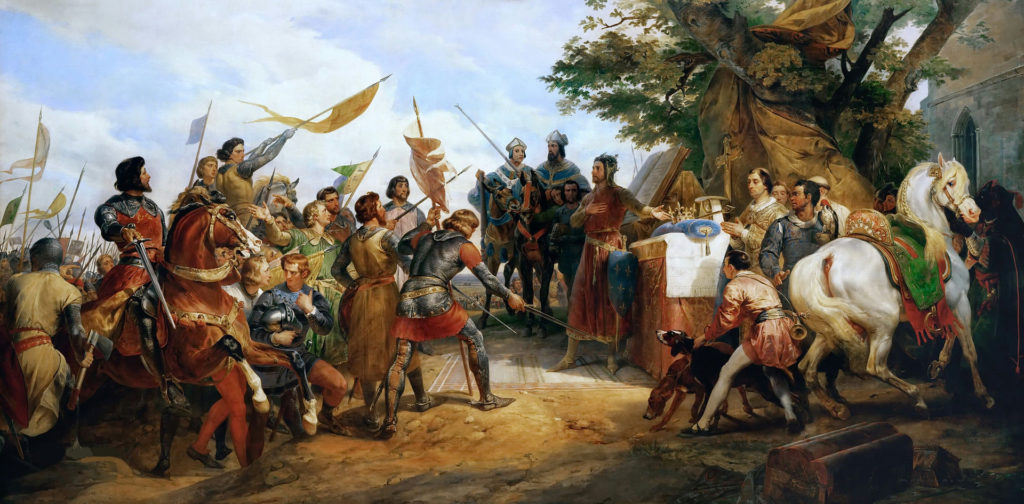
The hapless King John was determined to regain the Angevin lands he had lost in Normandy and Anjou. To accomplish this, John allied with Emperor Otto IV, Count Ferrand of Flanders and Hainaut, Duke Henry I of Brabant, Count William I of Holland, Duke Theobald I of Lorraine, and Duke Henry III of Limburg. John intended to draw the French forces and his opponent, King Philippe II of France known as Augustus, from Paris to the south where the English would entrap the French. The allied armies would invade the French domains from the north and conquer Paris.
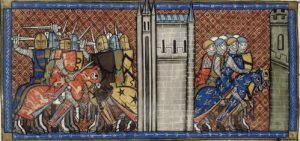
Initially, John’s plan seemed to be working, and his armies had a few skirmishes in the south. But John did not have tactical and strategic skills, unlike Philippe Augustus for whom politics was like a game of chess where few could win contests against him. John was not a warrior monarch either, in contrast to his late brother, King Richard I of England the Lionheart. Another problem was that John’s allies moved slowly in the north and finally stopped at Valenciennes on the Scheldt River, their total force consisting of approximately 9,000 men. Meanwhile, Philippe gathered all of his vassals, and they assembled an army that included from 6,000 to 9,000 soldiers.
Philippe counter-marched north to deal with the allies after he had sent his son, Prince Louis, to the south. Louis’ armies marched on Roche-aux-Moins, where John was besieging the castle. However, John was outwitted by Philippe: as they saw Louis’ troops, the Poitevin barons, who had once pledged their allegiance to Eleanor of Aquitaine and Richard the Lionheart, refused to follow John into battle. Therefore, the unfortunate English monarch was compelled to leave the army’s baggage and siege machines, retreating hastily to La Rochelle. From there, John sent a letter to his English barons, beseeching them to give them reinforcements, but all in vain.
Near the town of Bouvines, Philippe divided his troops into 3 wings. The right wing included the soldiers from Champagne and Burgundy under the command of Duke Eudes of Burgundy, and his lieutenants. The central wing was headed by Philippe and his chief knights such as William de Garland, Enguerrand de Coucy, Gautier de Nemours. The left wing was commanded by Robert of Dreux and Count William of Ponthieu. The monarch ordered that the men from the French reserve guarded the bridge of Bouvines, which was the only way to retreat across the marshes.
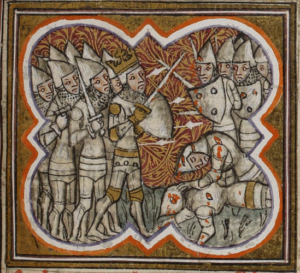
The battle was fought on a hot summer afternoon and lasted several hours. It opened on the French right wing when about only 150 light cavalrymen attacked the Flemish knights on the allied left wing to get the foe confused. Gaucher de Châtillon, the Duke of Burgundy’s lieutenant, sent his knights to carry out a series of charges that stopped the advancement of the allies. The fiercest confrontation escalated between the central and left wings of the French and the allied forces. The Burgundians battled against the Flemish forces with a peculiar ferocity, taking no prisoners. The horse under the Duke of Burgundy was killed, but he was rescued by his men in time.
The French infantry assembled in front of Philippe’s knights and the fleur-de-lis standard. Soon they were attacked by the allied knights under the command of Emperor Otto, but the French quickly threw them back. The allied infantrymen advanced forward and managed to break through the French lines, approaching King Philippe and unhorsing him with their hooked pikes. Philippe was lucky that his armor deflected a blow, while his soldiers protected him and brought for him a new destrier. Then the allied infantry stabbed unhorsed French knights with daggers through the openings in their helmets and armor, which led to significant French losses. However, Philippe organized quick counterattacks, and after a bloody fight, the allies were repelled.
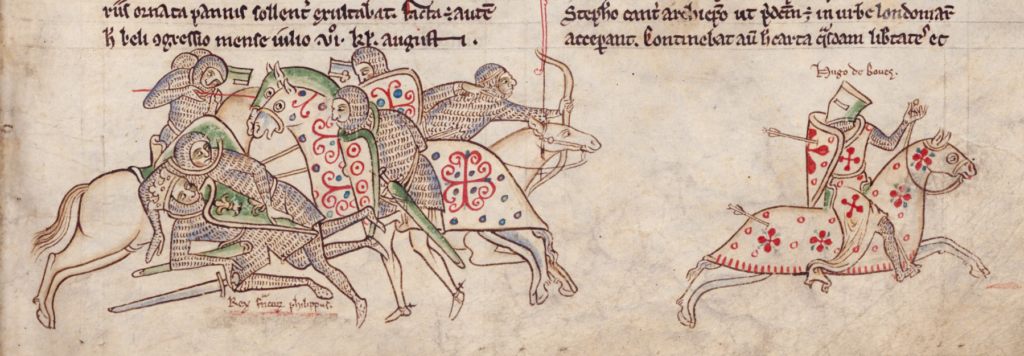
The French had one important advantage: their king and his generals commanded their forces better and in a more organized manner than their opponents did. The central wings clashed again, and the French and Imperial reserves, led by Philippe and Otto, collided. A French knight stabbed the emperor with a dagger, but it bounced off his chainmail and struck Otto’s stallion in the eye. After being unhorsed, Otto was rescued by his loyal German knights, but Philippe’s men were pursuing them. Otto and his men began their hasty retreat, while the German soldiers hard not to let the French capture their emperor and create for Otto and his entourage an avenue for escape. Soon the French captured the Imperial standard with the eagle and dragon, and the Flemish and German resistance ended, most of their soldiers killed and only a few taken prisoners.
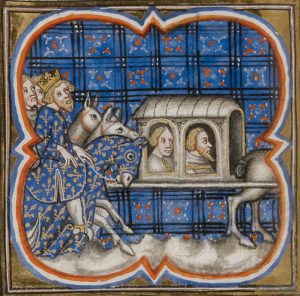
The French casualties were not recorded, but their infantry lost many men. A lot of the allied forces were annihilated, including German and Flemish knights and infantry. Philippe emerged triumphant from the battle and took notable prisoners, including Renaud de Dammartin (a former vassal of King Philippe), Count Ferrand of Flanders and Hainaut, William Longespée, Earl of Salisbury, as well as several counts, 25 barons, and over 100 knights. Philippe returned to Paris victorious, while his captives all marched behind him in a long procession, which must have looked like an ancient Roman triumph. Having escaped from the battlefield, Otto found refuge in his castle of Harzburg, but he was soon deposed Frederick II, the next Holy Roman Emperor.
If Philippe Augustus had lost, the west of France would have been English, while the north would have been Flemish, and the east would have been German. But Philippe won and set the contours of the new French kingdom. Ferdinand Lot, who was a 19-th century French historian and medievalist, called the Battle of Bouvines a ‘medieval Austerlitz’. As a consequence, Philippe Augustus became the undisputed ruler of the former Angevin holdings on the continent, while King John retired to England and then had to deal with his displeased barons who were angry with their liege lord for his military failures and for financing his unsuccessful expeditions.
All images are in the public domain.
Text © 2020 Olivia Longueville

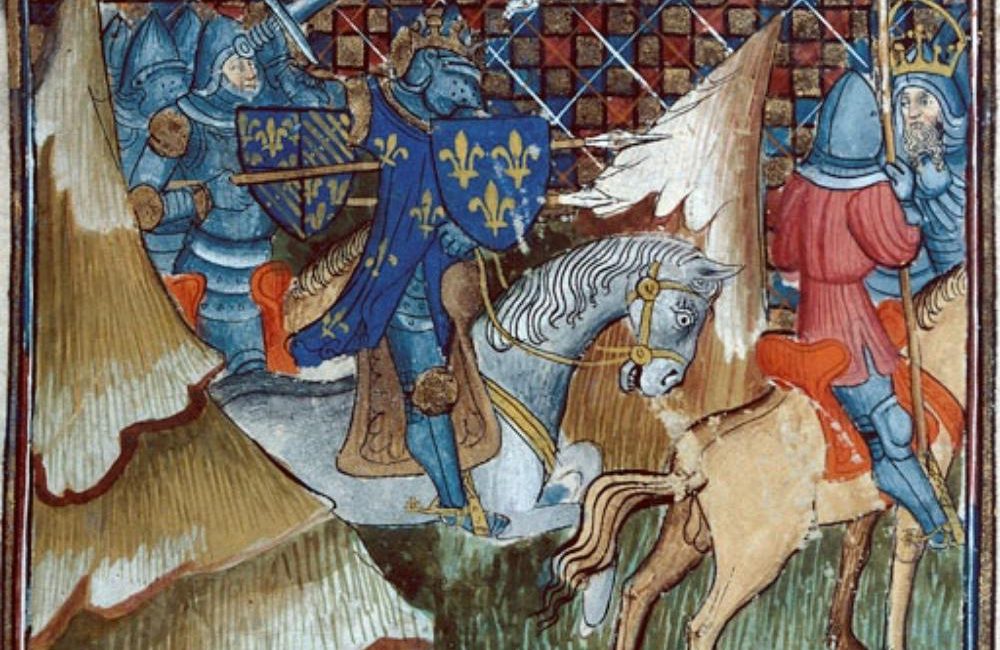




Thank you for that lucid report. Can you give me any idea of how many English would have fought please
Hello! I am not sure, but I think several thousand knights.